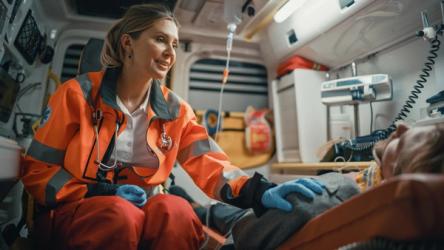What would you do with $73 billion? I would buy a few mansions and islands, own a couple of planes, definitely a massive yacht, make sure all my friends and family are taken care of and I may even buy the Atlanta Falcons and see if I can get them back to the Super Bowl - well...that may be a stretch, but life would be good!
Though it may sound like all fun and games, this number is not auspicious - it is worrisome.
Every year, it is estimated that $73 billion is connected to drug diversion in the United States (Pharmacy Times, 2016). Drug Diversion is the transfer of a controlled substance from a lawful to an unlawful channel of distribution or use, basically stealing and/or using drugs.
The impact of this problem lies not only in the billions of dollars expended, it also includes loss of lives, heavy addictions, incarcerations, departments shut down, huge fines to businesses, and careers lost.
Controlled substances are an enormous part of patient care. Professionals within hospitals, EMS agencies, Fire Departments, pharmacies, nursing care facilities, and health clinics are often vulnerable to drug diversion and addiction by the nature of their jobs.
Here are a few examples of diversion:
- Simple theft: controlled substance taken from a cabinet, dispensing machine, or other areas where controlled substances are stored.
- Theft by substitution: controlled substance is removed from its container and replaced with another substance.
- Theft by documentation: the medical chart, records, or logs manipulated to show controlled substance was administered and dosage given; however, a smaller amount, or no medication, was given.
- Under medicating the patient: a specific amount of controlled substance is ordered and only partially administered.
There are many ways to divert drugs and an addict will do whatever it takes to get what they need to feed their addiction. Drug diversion is a tricky problem to manage. Patient care from hospitals to emergency management services rely on trust and modest record-keeping tracking their narcotics.
How can we reduce this problematic situation without compromising quality care for the people who need the medicine?
Twelve years ago, when I started working for Operative IQ, I worked directly with high-ranking personnel within EMS and Fire Departments. During conversations, I noticed specific themes or topics that surround controlled substances:
- Inconsistencies with documentation
- Locations of vials/boxes
- Daily usage rates
- Expired items
- Excessive use by medics
- Unusual patterns
- Lack of incident reporting, and notes (missing liquids, missing or torn labels, removed caps, odd marks or punctures, etc.)
- Who had it last?
At that time, I could not help them with any of the problems! Luckily, we have come a long way, and today we have a solution. I am not saying I can put the Chris Farley 100% guarantee on the box, but I can tell you that accountability and visibility will become much clearer for you and your organization.
Using an electronic narcotics tracking system like Operative IQ will give you the peace of mind of knowing that every transaction is being captured and completely documented within the software. You will be able to discover usage and waste trends, distinctive patterns, eliminate inconsistencies with documentation, view all transaction logs, audit details, and more. To make transactions even more secure, use the biometric feature simply because you cannot fake a fingerprint!
Addiction is a disease and addicts might not think about the repercussions that not only happen to themselves, but to their families, friends, and coworkers. It is a slippery slope that can escalate quickly and get out of control. Let us all work together and see if we can eradicate the $73 billion and perhaps help the Atlanta Falcons Super Bowl dream come to fruition.
Visit the Narcotics Tracking page to learn more.
References:
"The High Cost of Drug Diversion." Pharmacy Times, 4 January 2016, pharmacytimes.com/view/the-high-cost-of-drug-diversion.

